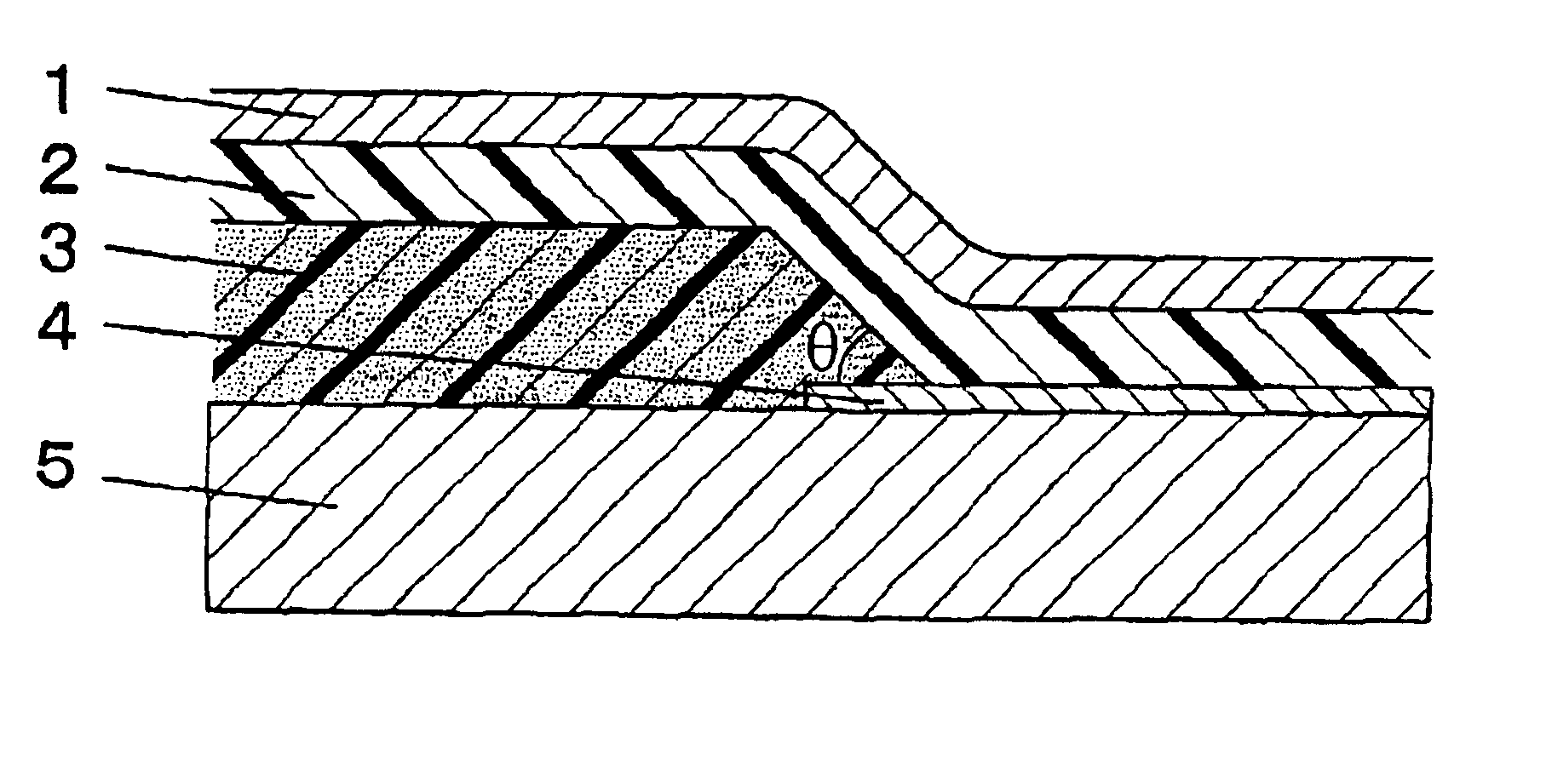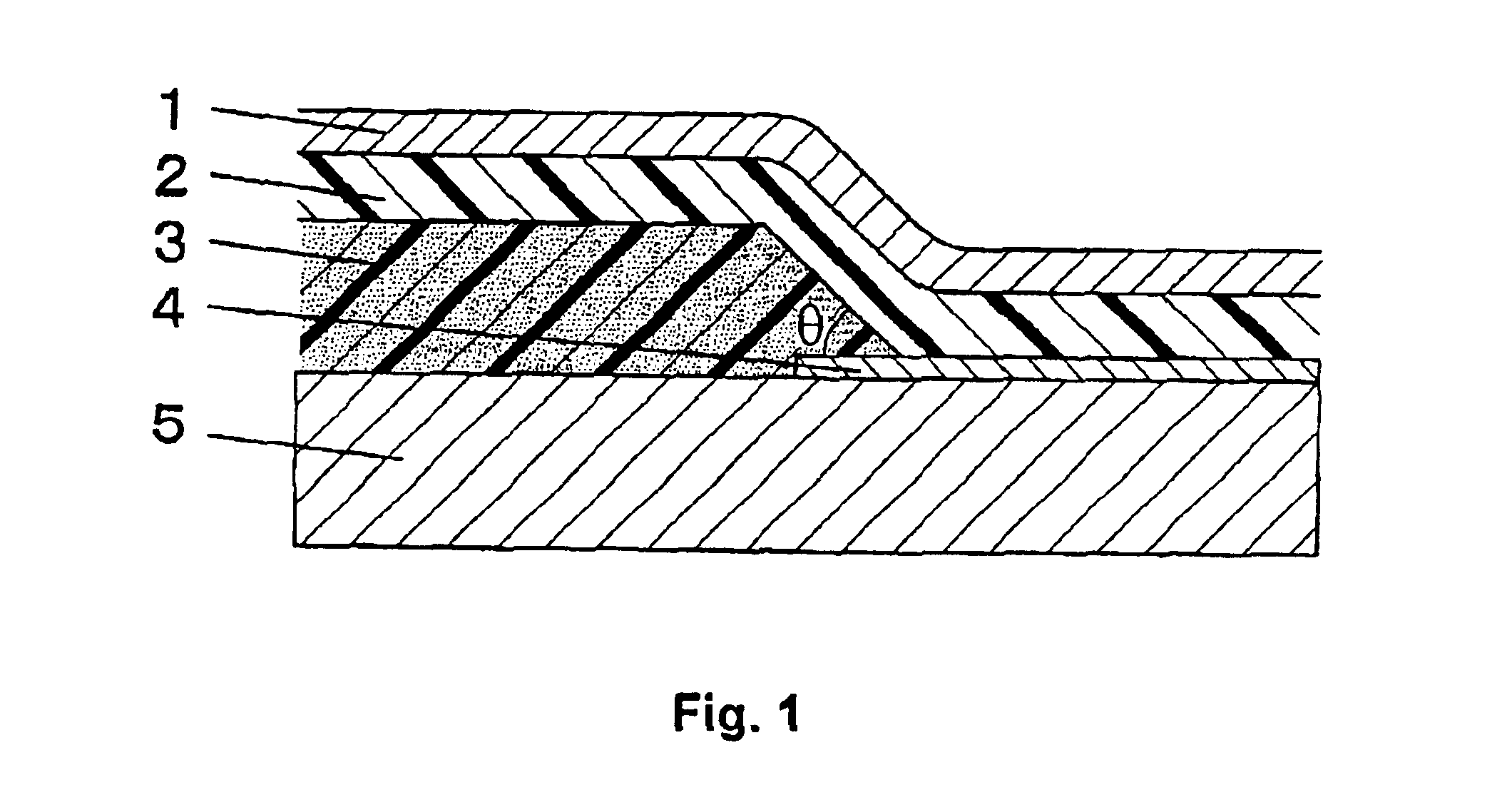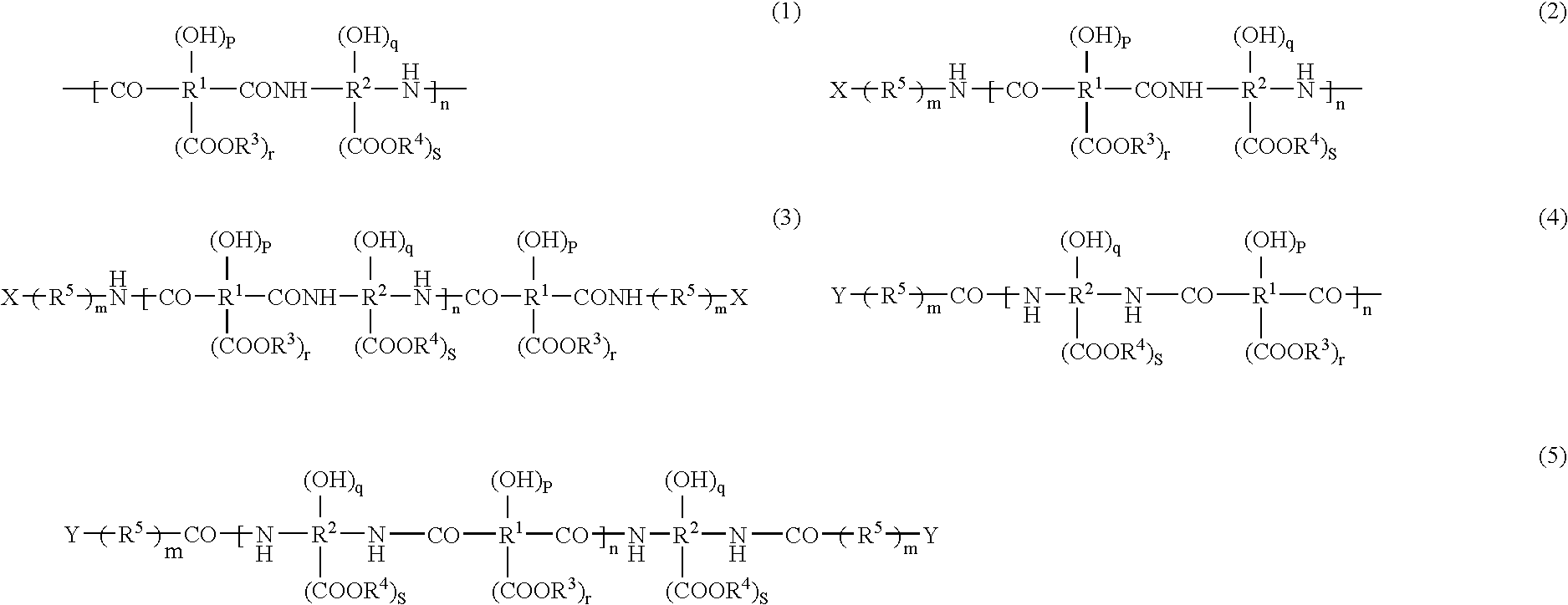Positive-type photosensitive resin composition
a technology of photosensitive resin and composition, which is applied in the direction of photosensitive materials, photomechanical equipment, instruments, etc., can solve the problems of heat resistance in the final heat treatment, low exposure sensitivity, and high light blocking property, and achieve good light blocking effect and high quality
- Summary
- Abstract
- Description
- Claims
- Application Information
AI Technical Summary
Benefits of technology
Problems solved by technology
Method used
Image
Examples
synthesis example 1
Synthesis of Hydroxyl Group-Containing Acid Anhydride (A)
[0100]Under dry nitrogen gas flow, 18.3 g (0.05 mol) of 2,2-bis (3-amino-4-hydroxyphenyl)hexafluoropropane (BAHF) and 34.2 g (0.3 mol) of allylglycidyl ether were dissolved in 100 g of γ-butyrolactone, and the resulting mixture was cooled to −15° C. To this mixture, 22.1 g (0.11 mol) of anhydrous trimellitic chloride dissolved in 50 g of γ-butyrolactone was added dropwise such that the temperature of the reaction mixture did not exceed 0° C. After completion of the dropping, the resulting mixture was reacted at 0° C. for 4 hours. This solution was concentrated in a rotary evaporator, and the resultant was added to 1 L of toluene to obtain an acid anhydride (A).
synthesis example 2
Synthesis of Hydroxyl Group-Containing Diamine Compound (B)
[0101]In 50 ml of acetone and 30 g (0.34 mol) of propylene oxide, 15.4 g (0.1 mol) of 2-amino-4-nitrophenol was dissolved, and the mixture was cooled to −15° C. To this mixture, 17.8 g (0.055 mol) of 2,2-bis(4-benzoyl chloride)propane dissolved in 60 ml of acetone was slowly added dropwise. After completion of the dropping, the resulting reaction mixture was allowed to react at −15° C. for 4 hours. The reaction mixture was allowed to warm to room temperature, and the generated precipitates were recovered by filtration.
[0102]The precipitates were dissolved in 200 ml of γ-butyrolactone and 3 g of 5% palladium-carbon was added thereto, followed by vigorous stirring of the resulting mixture. A hydrogen gas balloon was attached to the reaction vessel to supply hydrogen gas to the reaction mixture. The stirring of the reaction mixture was continued at room temperature until the balloon did not shrink any more, and the reaction mix...
synthesis example 3
Synthesis of Hydroxyl Group-Containing Diamine Compound (C)
[0103]In 100 ml of acetone and 17.4 g (0.3 mol) of propylene oxide, 18.3 g (0.05 mol) of BAHF was dissolved and the mixture was cooled to −15° C. To this mixture, 20.4 g (0.11 mol) of 4-nitrobenzoyl chloride dissolved in 100 ml of acetone was slowly added dropwise. After the dropping, the mixture was allowed to react at −15° C. for 4 hours, and then the mixture was allowed to warm to room temperature. The precipitated white solid was separated by filtration and dried in vacuum at 50° C.
[0104]The thus obtained 30 g of solid was placed in a 300 ml stainless steel autoclave, and dispersed in 250 ml of methyl cellosolve, followed by addition of 2 g of 5% palladium-carbon. After attaching a hydrogen gas balloon to the reaction vessel, reduction reaction was carried out at room temperature. After about 2 hours, it was confirmed that the balloon did not shrink any more, and the reaction was completed. After completion of the reacti...
PUM
| Property | Measurement | Unit |
|---|---|---|
| optical density | aaaaa | aaaaa |
| wavelength range | aaaaa | aaaaa |
| light transmittance | aaaaa | aaaaa |
Abstract
Description
Claims
Application Information
 Login to View More
Login to View More - R&D
- Intellectual Property
- Life Sciences
- Materials
- Tech Scout
- Unparalleled Data Quality
- Higher Quality Content
- 60% Fewer Hallucinations
Browse by: Latest US Patents, China's latest patents, Technical Efficacy Thesaurus, Application Domain, Technology Topic, Popular Technical Reports.
© 2025 PatSnap. All rights reserved.Legal|Privacy policy|Modern Slavery Act Transparency Statement|Sitemap|About US| Contact US: help@patsnap.com



